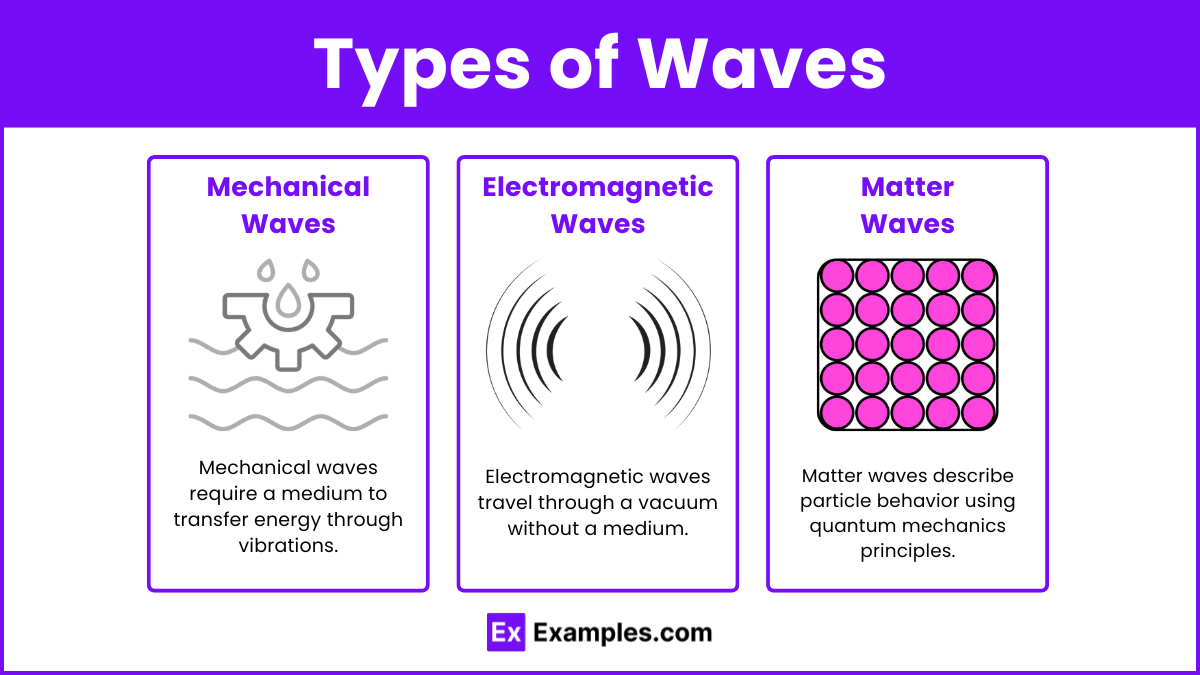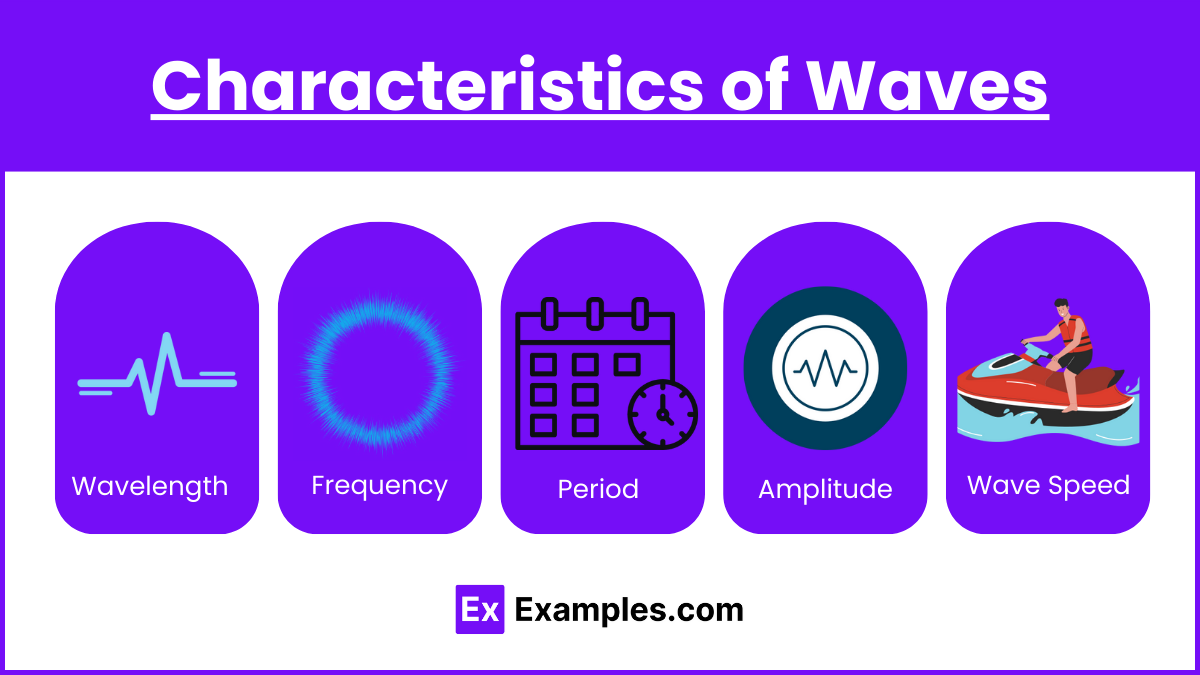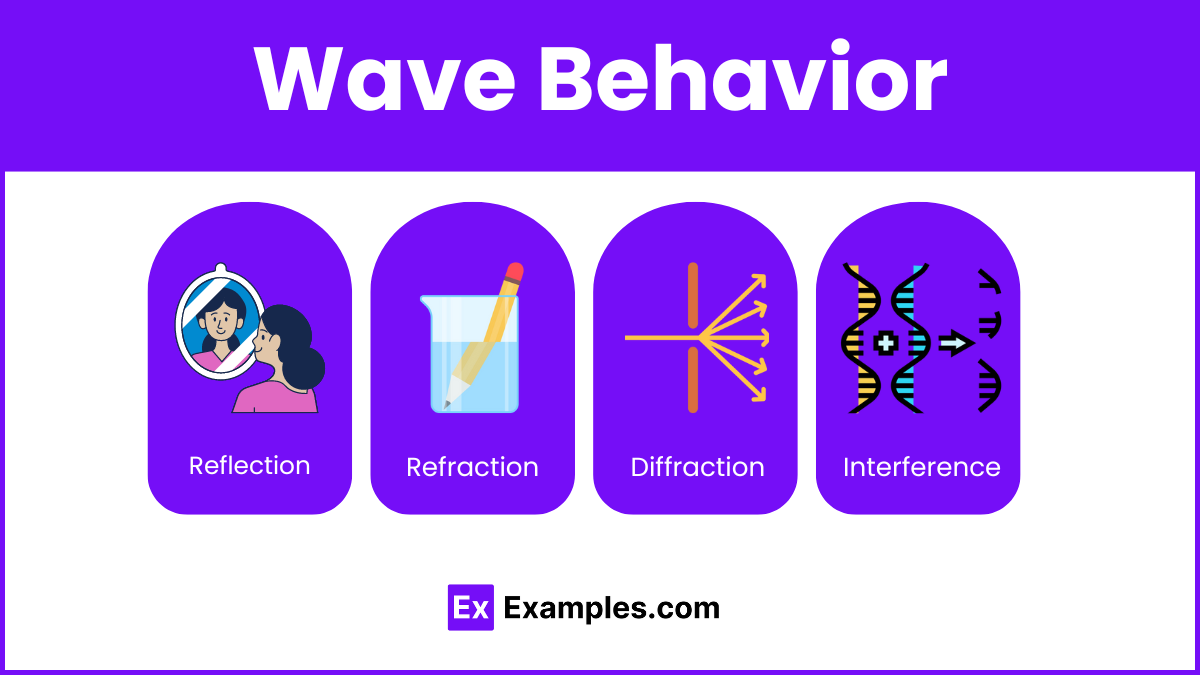Waves are disturbances that transfer energy from one place to another without moving matter. In AP Physics, understanding waves is crucial as they manifest in various forms such as sound, light, and water waves. Waves are characterized by properties like wavelength, frequency, amplitude, and speed. They exhibit behaviors including reflection, refraction, diffraction, and interference. Mastering these concepts will provide a strong foundation for more advanced topics in AP Physics.
Learning Objectives
Understand the characteristics and types of waves, including mechanical and electromagnetic waves. Learn key concepts such as wavelength, frequency, period, amplitude, and wave speed. Study wave behaviors like reflection, refraction, diffraction, and interference. Master wave equations and their applications in solving problems. Gain the ability to analyze and interpret wave phenomena in various contexts. Focus on applying these principles to real-world scenarios and exam-style questions for thorough preparation.
Waves

Definition: A wave is a disturbance that transfers energy from one place to another without transferring matter. Waves can travel through different mediums or even through a vacuum.
Types of Waves

- Mechanical Waves:
- Require a medium (solid, liquid, or gas) to travel.
- Examples: Sound waves, water waves, and seismic waves.
- Electromagnetic Waves:
- Do not require a medium and can travel through a vacuum.
- Examples: Light waves, radio waves, and X-rays.
- Matter Waves:
- Associated with particles of matter and described by quantum mechanics.
- Example: Electron waves.
Characteristics of Waves

- Wavelength (λ):
- The distance between two consecutive points in phase (e.g., crest to crest or trough to trough).
- Measured in meters (m).
- Frequency (f):
- The number of waves that pass a given point per second.
- Measured in hertz (Hz).
- Period (T):
- The time taken for one complete cycle of the wave to pass a point.
- T=1/f
- Measured in seconds (s).
- Amplitude (A):
- The maximum displacement from the equilibrium position.
- Measured in meters (m) or other relevant units depending on the wave type.
- Wave Speed (v):
- The speed at which the wave propagates through the medium.
- v=f⋅λ
- Measured in meters per second (m/s).
Types of Mechanical Waves
- Transverse Waves:
- The particles of the medium move perpendicular to the direction of wave propagation.
- Examples: Light waves, waves on a string.
- Longitudinal Waves:
- The particles of the medium move parallel to the direction of wave propagation.
- Examples: Sound waves, compression waves in a spring.
Wave Behavior

- Reflection
- When a wave bounces back after hitting a barrier.
- The angle of incidence equals the angle of reflection.
- Refraction
- The change in direction of a wave as it passes from one medium to another due to a change in speed.
- Snell’s Law: n₁sinθ₁=n₂sinθ₂
- Diffraction
- The bending of waves around obstacles and openings.
- More significant when the wavelength is comparable to the size of the obstacle/opening.
- Interference
- The superposition of two or more waves resulting in a new wave pattern.
- Constructive Interference: When waves are in phase, resulting in increased amplitude.
- Destructive Interference: When waves are out of phase, resulting in decreased amplitude.
Wave Equations and Formulas
- Wave Speed Equation: v=f⋅λ
- Period-Frequency Relationship: T=1/f
- Snell’s Law (Refraction): n₁sinθ₁=n₂sinθ₂n
- Wave Equation (for a wave on a string): v =
v=μT
- T = Tension in the string
- μ = Linear mass density of the string
Examples of Waves:
- Sound Waves: Vibrations that travel through air, water, or solids, allowing us to hear.
- Light Waves: Electromagnetic waves that are visible to the human eye.
- Water Waves: Oscillations that travel along the surface of water, such as those seen in oceans and lakes.
- Seismic Waves: Energy waves generated by earthquakes that travel through the Earth’s layers.
- Radio Waves: Electromagnetic waves used for wireless communication and broadcasting.
Practice Test Questions on Waves
Question 1:
Which of the following statements about wave energy conservation is true?
A) Wave energy can be created or destroyed.
B) Wave energy remains constant in an isolated system.
C) Wave energy increases as the wave travels through a medium.
D) Wave energy is not conserved.
Answer: B) Wave energy remains constant in an isolated system.
Explanation: According to the principle of energy conservation, the total energy of a wave in an isolated system remains constant over time. This means that wave energy cannot be created or destroyed but can transform from one form to another or transfer from one part of the system to another.
Question 2:
When a wave travels from one medium to another and its speed changes, which property remains conserved?
A) Wavelength
B) Frequency
C) Amplitude
D) Speed
Answer: B) Frequency
Explanation: When a wave travels from one medium to another, its speed and wavelength may change, but its frequency remains constant. This is because frequency is determined by the source of the wave and is not affected by the medium through which the wave travels.
Question 3:
During constructive interference of two waves, which of the following occurs?
A) The amplitude of the resulting wave is the difference between the amplitudes of the two waves.
B) The energy of the resulting wave is lost.
C) The amplitude of the resulting wave is the sum of the amplitudes of the two waves.
D) The frequency of the resulting wave changes.
Answer: C) The amplitude of the resulting wave is the sum of the amplitudes of the two waves.
Explanation: In constructive interference, two waves combine to form a wave with an amplitude equal to the sum of the amplitudes of the individual waves. This results in a wave with greater energy and a larger amplitude, demonstrating the principle of energy conservation in wave interactions.


